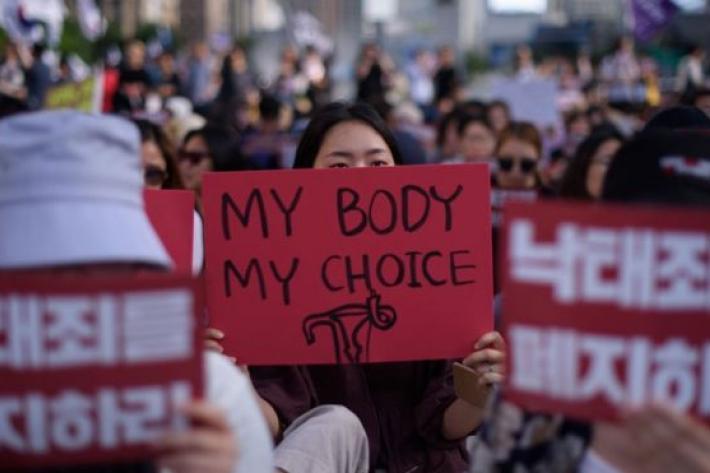The US Supreme Court has agreed to hear a challenge to Mississippi’s 15-week ban on abortion in a major case that will be closely watched across the US.
The verdict could upend the legal right to abortion laid out in the court’s 1973 landmark Roe v Wade ruling.
It will be the first abortion case heard by Justice Amy Coney Barrett, an anti-abortion advocate who then-President Trump nominated in fall 2020.
The court is ideologically split, with conservatives holding a 6-3 majority.
The case, Dobbs v Jackson Women’s Health Organization, challenges the constitutionality of abortions performed after week 15 of pregnancy.
If Mississippi’s ban is upheld by the Supreme Court, it could pave the way for further abortion restrictions that have been pushed for by conservatives.
Anti-abortion activists have been waiting, sometimes impatiently, for the increasingly conservative-dominated Supreme Court to take up a case that could allow it to drive a stake through the heart of Roe v Wade. On Monday morning, the court obliged.
Mississippi’s 15-week abortion ban was written as direct challenge to existing Supreme Court guidelines governing the legality of abortion. If a majority of the nine-member court decides to uphold the law, it will pave the way for other states to impose their own stringent limitations on the procedure.
That the court decided to hear the case after lower courts struck down the law suggests that at least four justices are open to doing just that.
Abortion has been one of the most highly charged judicial topics in the last half-century. The 1973 Roe case legalizing first-trimester abortion nationwide was sweeping in its scope and gave rise to the modern religious conservative movement. A slim majority of justices turned back a serious challenge to the precedent in 1992’s Planned Parenthood Casey.
This Mississippi challenge has the potential to rank alongside those landmark cases. It could be the case that kills Roe and hands the issue of abortion legality back to the states to decide.
What is Roe v Wade?
The 1973 Supreme Court ruling legalized abortion in the US.
By a vote of seven to two, the court justices ruled that governments lacked the power to prohibit abortions.
The court’s judgement was based on the decision that a woman’s right to terminate her pregnancy came under the freedom of personal choice in family matters as protected by the 14th Amendment of the US Constitution.
The case created the “trimester” system that:
- gives American women an absolute right to an abortion in the first three months of pregnancy
- allows some government regulation in the second trimester of pregnancy
- declares that states may restrict or ban abortions in the last trimester as the foetus nears the point where it could live outside the womb
- Roe Wade also established that in the final trimester a woman can obtain an abortion despite any legal ban only if doctors certify it is necessary to save her life or health.
Overturning Roe v Wade would not make abortion illegal, it would just allow each state to determine its own rules.
What power do states have?
Since Roe v Wade, conservative states have pushed to bypass the ruling and make their own rules governing abortion.
Though the Roe v Wade judgement was upheld, states won the right to restrict abortion even in the first trimester for non-medical reasons after the 1992 Planned Parenthood v Casey Supreme Court case.
State laws must not place an “undue burden” on women seeking abortion services, the court said. However, it is the woman and not the authorities who have to prove that the regulations are damaging.
As a result many states now have restrictions in place such as requirements that young pregnant women involve their parents or a judge in their abortion decision. Others have introduced waiting periods between the time a woman first visits an abortion clinic and the actual procedure.
The result of these restrictions is that many women have to travel further to get an abortion, often across state borders, and pay more for them.
Last year, the Supreme Court struck down a Louisiana law that required doctors who perform abortions to have admitting privileges at nearby hospitals.
Critics said the controversial law would limit the number of providers in the state, violating a woman’s right to an abortion.
Last week, Texas joined at least a dozen states that have passed bills that ban abortion after a foetal heartbeat can be detected – which often happens before a woman even knows she is pregnant.
According to the Guttmacher Institute, a research group that supports abortion rights, state lawmakers have introduced more than 500 restrictions on abortion this year.
“The year 2021 is well on its way to being a defining one in abortion rights history,” said the authors of the report.
Many of the cases have been challenged in the courts, setting up possible future legal showdowns in the Supreme Court such as the current one prompted by the Mississippi law.







